Market Data

November 5, 2019
Employment by Industry Through October 2019
Written by Peter Wright
Jobs have been lost in the primary metals sector in each of the last seven months.
In October, 10,000 jobs were created in construction, while manufacturing industries lost 36,000 jobs. A reported 131,000 jobs were created in the private sector, while government lost 3,000 positions.
Table 1 breaks total employment down into service and goods-producing industries and then into private and government employees. Most of the goods-producing employees work in manufacturing and construction, and the components of these two sectors of most relevance to steel people are broken out in Table 1.
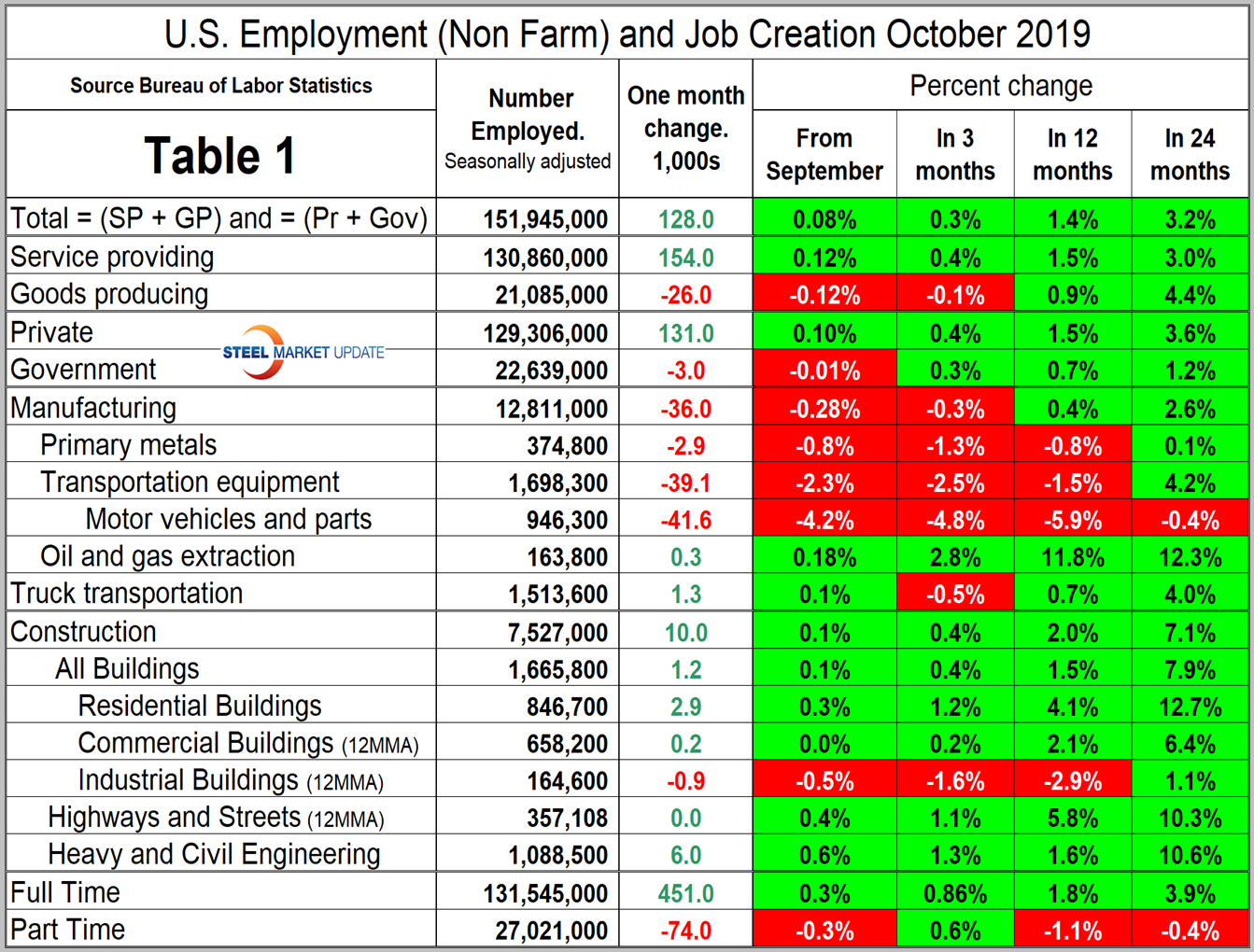
In October, the number employed by the federal government declined by 17,000. State government employment increased by 3,000 and the local level increased by 11,000. Since February 2010, the low point of total nonfarm payrolls, private employers have added 22,067,000 jobs as government has gained 163,000 (Figure 1).
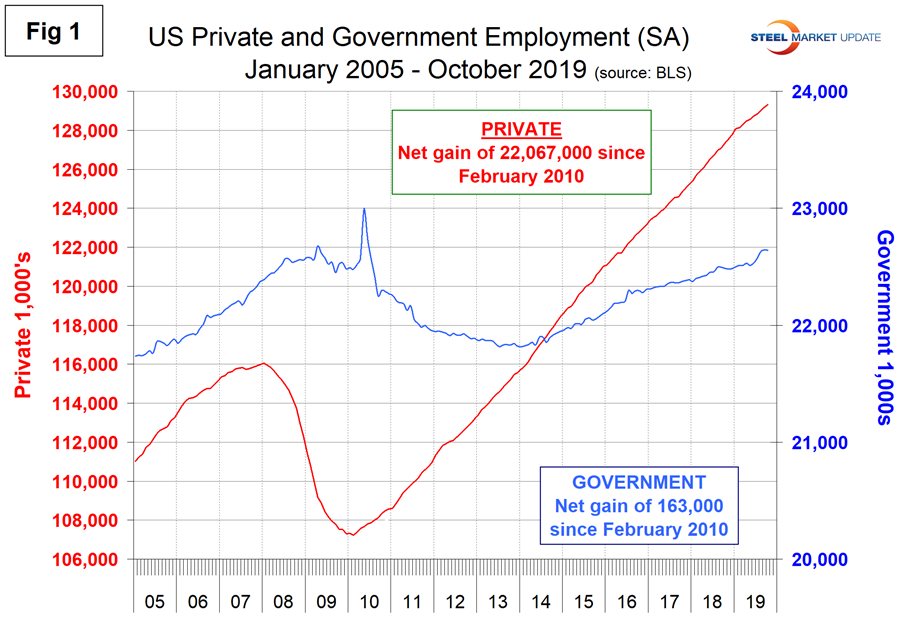
In October, service industries expanded by 154,000 as goods-producing industries, driven mainly by construction and manufacturing, declined by 26,000 (Figure 2). The GM strike was reported to have resulted in a decline of 42,000 people employed. Since February 2010, service industries have added 18,772,000 and goods-producing 3,458,000 positions. This has been a drag on wage growth since the recession as service industries on average pay less than goods-producing industries such as manufacturing. In the last 24 months, the rate of job creation in goods producing industries on a percentage basis has been higher than in service industries, but that trend reversed in more recent time periods.
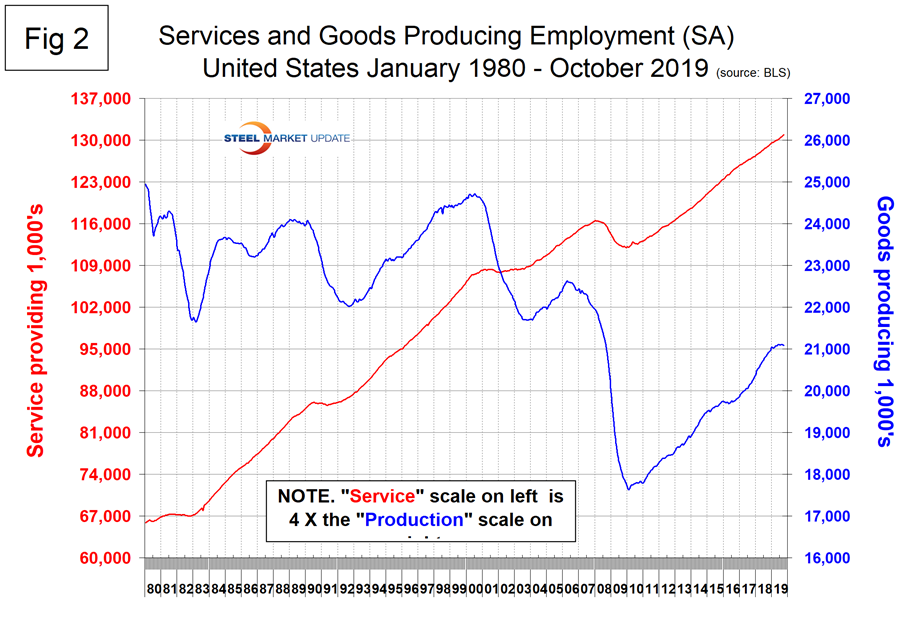
Construction was reported to have gained 10,000 jobs in October as manufacturing lost a net 36,000 after the GM effect. Since and including January 2018, construction has added 434,000 and manufacturing 266,000. In 2019, manufacturing has gained only 2,000 including the effect of the strike. Manufacturing productivity improved by 0.2 percent in Q2 2019 after a gain of 0.9 percent in Q1 2019. Figure 3 shows the history of construction and manufacturing employment since October 2005. Construction has added 2,027,000 jobs and manufacturing 1,358,000 since the recessionary employment low point in February 2010. The number of unemployed jobseekers with construction experience reached a record low for September, according to an analysis of government data by the Associated General Contractors of America.

Note, the subcomponents of both manufacturing and construction shown in Table 1 don’t add up to the total because we have only included those with the most relevance to the steel industry.
Table 1 shows that primary metals lost 2,900 jobs in October, and in the last 12 and 24 months has performed worse than manufacturing as a whole. Figure 4 shows the history of primary metals employment since January 2003. There has been a decline in each of the last seven months for a total of 8,400 in the last six months.

Motor vehicles and parts industries were reported to have lost 41,600 jobs in October as a result of the strike. Figure 5 shows the history of motor vehicles and parts job creation.
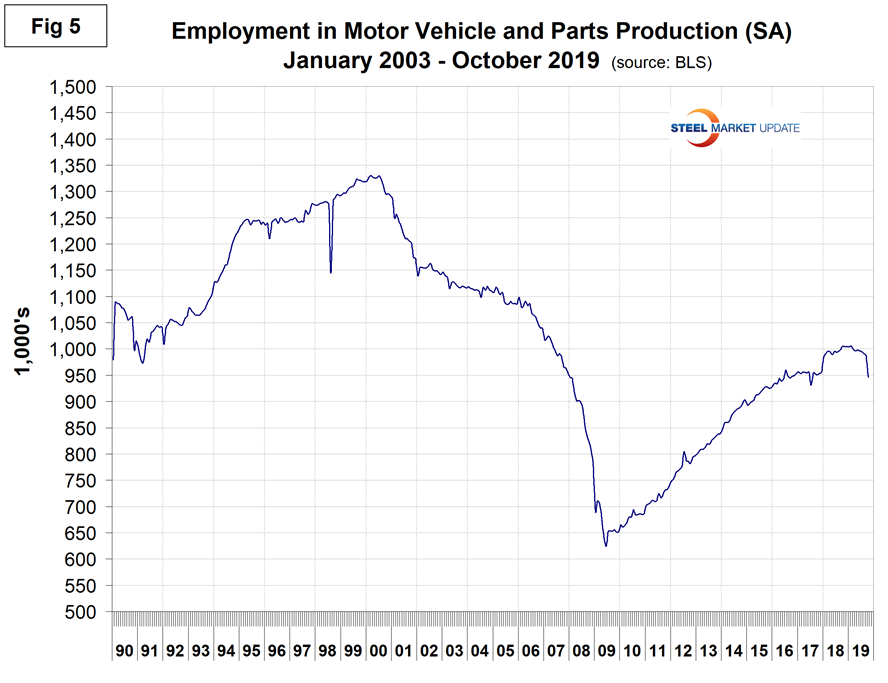
Trucking gained 1,300 jobs in October following a loss of 8,600 in the previous three months. Employment in truck driving is one of SMU’s recession monitors and Figure 6 shows there is no sustained driver decline at this time.
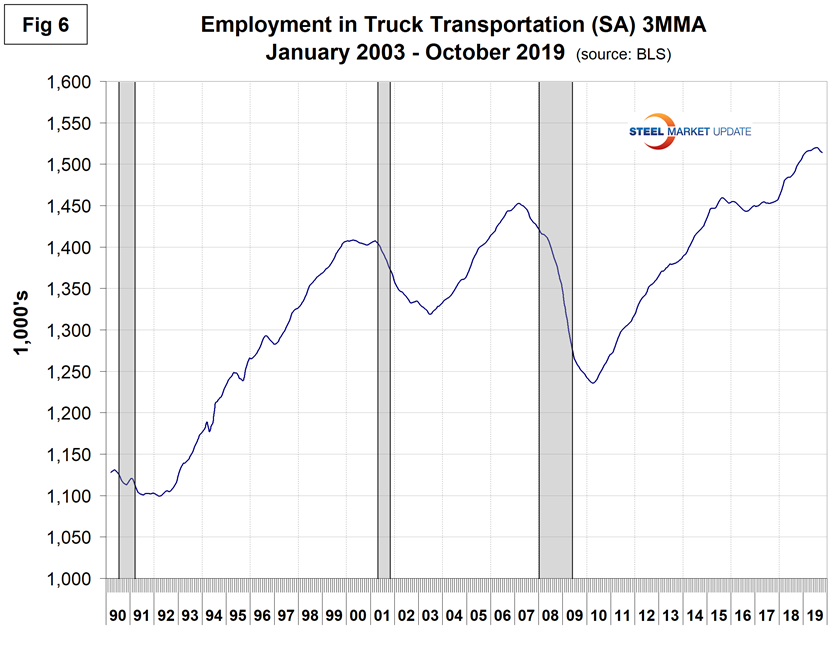
SMU Comment: The GM strike hit the manufacturing component of job creation in October, which distorted the data. Primary metals industries have lost jobs in each of the last seven months for a total of 8,400 positions. This trend was well underway before the GM strike and it is clear that this important economic indicator is a measure of the slowdown in steel consumption.
Explanation: On the first or second Friday of each month, the Bureau of Labor Statistics releases the employment data for the previous month. Data is available at www.bls.gov. The BLS employment database is a reality check for other economic data streams such as manufacturing and construction. It is easy to drill down into the BLS database to obtain employment data for many subsectors of the economy. The important point about all these data streams is the direction in which they are headed.







